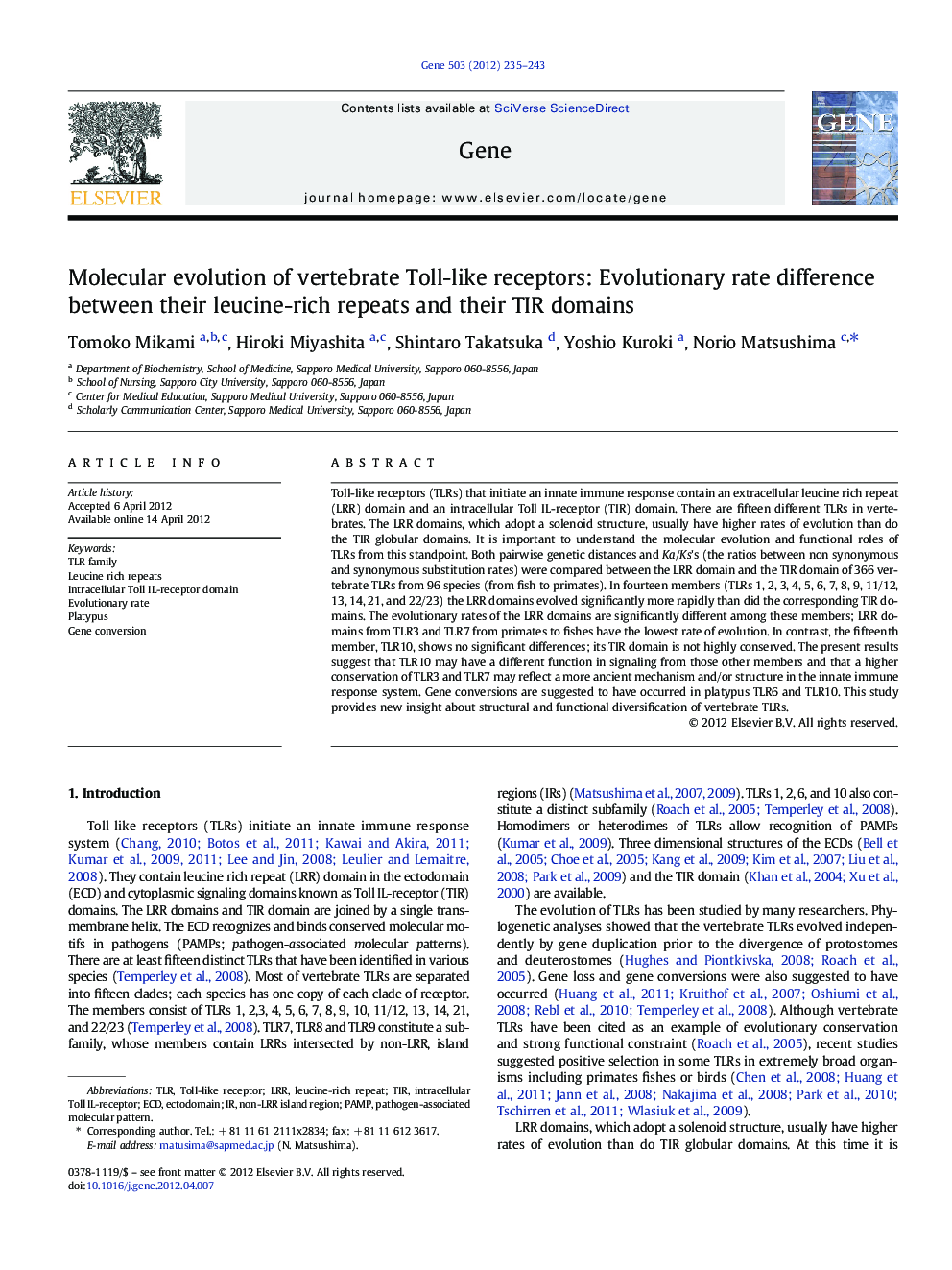| کد مقاله | کد نشریه | سال انتشار | مقاله انگلیسی | نسخه تمام متن |
|---|---|---|---|---|
| 2817884 | 1160017 | 2012 | 9 صفحه PDF | دانلود رایگان |

Toll-like receptors (TLRs) that initiate an innate immune response contain an extracellular leucine rich repeat (LRR) domain and an intracellular Toll IL-receptor (TIR) domain. There are fifteen different TLRs in vertebrates. The LRR domains, which adopt a solenoid structure, usually have higher rates of evolution than do the TIR globular domains. It is important to understand the molecular evolution and functional roles of TLRs from this standpoint. Both pairwise genetic distances and Ka/Ks's (the ratios between non synonymous and synonymous substitution rates) were compared between the LRR domain and the TIR domain of 366 vertebrate TLRs from 96 species (from fish to primates). In fourteen members (TLRs 1, 2, 3, 4, 5, 6, 7, 8, 9, 11/12, 13, 14, 21, and 22/23) the LRR domains evolved significantly more rapidly than did the corresponding TIR domains. The evolutionary rates of the LRR domains are significantly different among these members; LRR domains from TLR3 and TLR7 from primates to fishes have the lowest rate of evolution. In contrast, the fifteenth member, TLR10, shows no significant differences; its TIR domain is not highly conserved. The present results suggest that TLR10 may have a different function in signaling from those other members and that a higher conservation of TLR3 and TLR7 may reflect a more ancient mechanism and/or structure in the innate immune response system. Gene conversions are suggested to have occurred in platypus TLR6 and TLR10. This study provides new insight about structural and functional diversification of vertebrate TLRs.
► We determined evolutionary rate difference between the LRR and TIR of TLRs.
► The LRR domains in TLR3 and TLR7 have the lowest rate of evolution.
► Only in TLR10 the LRR and TIR evolutionary rate shows no significant difference.
► Gene conversions are suggested to have occurred in platypus TLR6 and TLR10.
► The present study provides new insight on the functional diversification of TLRs.
Journal: Gene - Volume 503, Issue 2, 25 July 2012, Pages 235–243